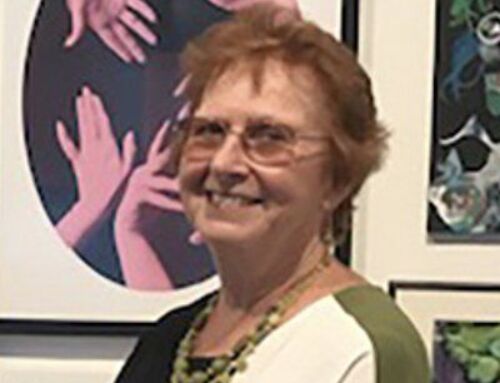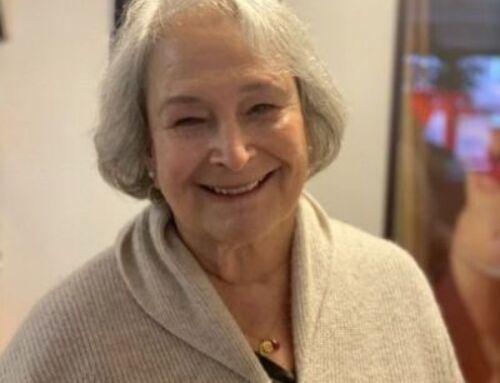
NEW NAWA ENTRY RULES: Artificial Intelligence
Hello Readers: Congratulations on being a Reader!
As artists and those interested in art, the idea of authenticity vs. artificiality is of some consequence these days.
Before AI takes over entirely, let’s take a look at “artificial.” AI did not help me write this, for your information (for better or worse). “Artificial” is defined by Oxford Languages as “made or produced by human beings rather than occurring naturally, especially as a copy of something natural.” There seems to be some irony in that.
For the great variety of artworks that NAWA artists create, we do not want to disqualify AI-assisted work. However, some new rules are added to the NAWA standard waiver for entering exhibitions. Fully AI-generated objects are not qualified for any entry. Neither is something that uses AI for a full underpainting. If using AI assistance, NAWA artists must declare it in medium labels. We ask for honesty from NAWA artists, documenting what was done in the process of creation.
You will see the following new guidelines in the Exhibition prospectuses that circulate from this point forward:
AI assisted, as a minor component (not entirely AI generated or underpainted) and digital media are acceptable if labeled with “digital” and/or “AI assisted” somewhere in the medium label. Original digital artwork IS acceptable as a fine-quality printout. If AI is determined by the submission and not declared, it will be disqualified. Please be honest about your chosen medium.
I’ve never liked artificial flowers. They’ve gotten more realistic over the years and can still be beautiful. They are no longer just stiff plastic imitations; many are now made of sophisticated fabrics and look way more natural. Can we agree, though, they don’t have the aura, the scent, fragility and therefore the full beauty of real flowers?
Artificial turf was supposed to be a panacea for clubs and towns to save money on field maintenance. We now know: 1) so-called “crumb rubber” contains known carcinogens, neurotoxins, endocrine disrupting chemicals, and microplastics—not what one wants the kids, or anyone, playing on—and not worth the price in the long run; 2) it is not as soft as earth and can increase injuries; and 3) it absorbs heat, which can increase surface temperature. I knew the gist of these things, but I checked in with artificial intelligence for some of the wording. Thanks, Google.
But this is NAWA NOW— and I want to report on the state of NAWA; where we are, and where we are going with the issue of AI. There is no denying that some degree of artificiality has been a gift. Zoom meetings make national membership more able to participate in committee meetings. Online exhibitions have made submissions more affordable for members, due to skipping the need to pay to ship artwork- at least for online-only exhibits. These are benefits, and they are now ensconced in NAWA culture. Surely these are not the first or last changes this 136 year-old organization has had to adapt to. Remember slide submissions? R.I.P. Ektachrome. Ditto hard disks.
On the other hand, is something lost when we are not in the same room with each other? What is lost when you only see a .jpeg of an artwork?
The term “.jpeg” itself is a relatively new member of the lexicon. I looked this up on Google, too. The Joint Photography Experts Group created a standard for digitizing imagery around 1992. Did I say “new”? The details of this standard are one of those magical mysteries, and I am grateful that the Group did this, uh, 33 years ago.
So, what is lost in a .jpeg? Like a real flower’s true aura and scent, or like the earth itself (under the artificial turf?), there is no substitute for being in the room with our friends, colleagues or co-workers. There is likewise, no real substitute for seeing artwork “in person.” Online, what we see is not the “pipe.” It is not even the paint, or the stone, the paper, or fiber. It is a .jpeg. On a screen. So, what is lost? I contend that the answer to this is intuitive. But can we describe it? Clue: it changes with the light.
I commute to the NAWA office at the National Arts Club in New York City two days a week. Two additional days each week, I speak to staff and members by phone or Zoom. Dialogue exchanged in real time is lost, especially through emails—piles and piles of emails. The ability to improvise and demonstrate in the moment is hampered—not lost, but constrained—when there are phones or screens between us. We have the ability to multitask on phones or computers, so manners and courtesy are more in demand in real time and space (though they should of course, be standard in all cases). In person, we are three dimensional and can choose where we look, as opposed to a camera choosing for us. Hint: we change with the lighting.
I don’t advocate for abandoning online exhibits. The convenience is undeniable, and they offer one of many ways for artists to get work seen. I am advocating for us not to lose the origins of content that are at the root of our relationships, and at the root of our created objects. I do not believe we’re in imminent danger of losing touch with those origins. However, I am concerned about the effort required to show up. We need to show up and talk about the artwork. This means alone and with others, in our studios, on studio tours and visits, at receptions, at galleries and other forums NAWA offers. One of my goals is to have more time for the galleries and studios.
Besides more in-person exhibits and artist talks, what NAWA really wants is more outside attention, including sponsors for in-person exhibits. NAWA also wants potential sponsors to recognize the therapeutic, relational, and experiential value in supporting in-person gallery and museum exhibits. Visiting major museums, I see folks flocking to the artwork. They’re mesmerized by works of creation from various time periods, and the auras they create, which are nearly immortal. They’re soaking it up like sponges. NAWA artworks are equally worthy of this attention. The quality is that good. The Vanda Gallery reception was proof of that. If you have not seen the March exhibit, “Celebrating Women Who Tell Our Stories,” please go to the website online gallery, or if you are reading this later, to “Past Exhibitions” on the NAWA website.
This was not begun as an appeal for sponsorships, but we are here now. Can you help, dear reader? Please donate, purchase an artwork, or refer us to someone who recognizes the magic in the hearts and the arts of NAWA artists. This is an investment in American Art Culture. Thank you again for your readership of NAWA NOW online magazine and keep creating.
– Jill Cliffer Baratta, MFA, NAWA Executive Director












